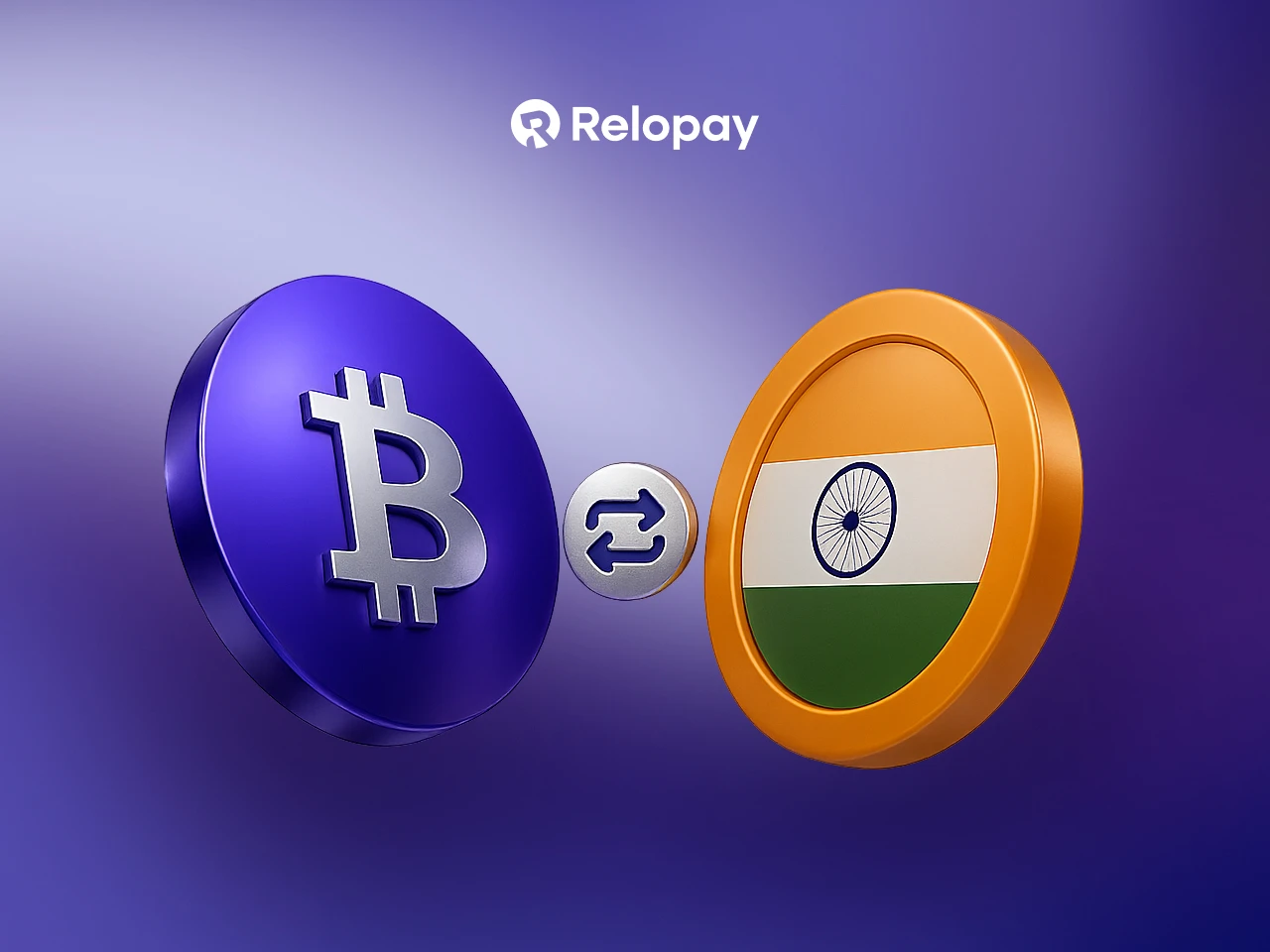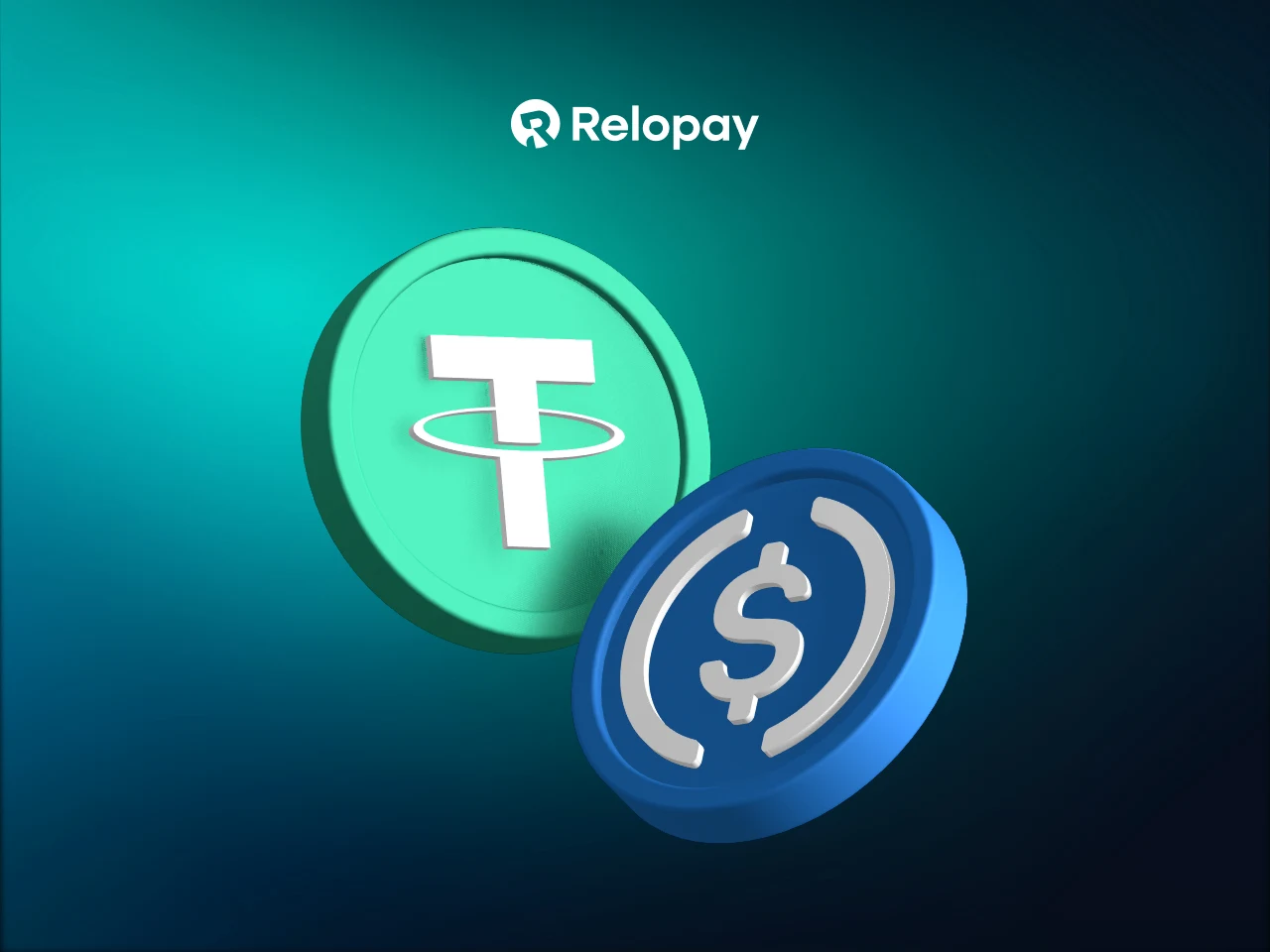India now applies one of the world’s most exacting crypto tax regimes. Investors and traders face a flat 30% tax on gains from Virtual Digital Assets (VDAs), a 1% TDS on transfers, and tight disclosure rules in the Income Tax Return (ITR). This guide turns complex law into clear, practical steps for Relopay users who buy, sell, hold, or spend Bitcoin, Ethereum, and other digital assets in India. We cover rates, filing, audit-proof records, and hands-on compliance for every major scenario so you can stay ahead of cryptocurrency tax in India requirements.
Key Regulatory Milestones
India’s approach to digital assets has moved fast since 2022. Below is a concise timeline so you can see how the rules evolved and why compliance matters today for every retail user, pro trader, and startup team.
- Budget 2022 defined Virtual Digital Assets (VDAs), introduced Section 115BBH (30% tax on gains) and Section 194S (1% TDS on transfers of VDAs).
- July 1, 2022: 1% TDS on crypto transfers took effect, covering sales, swaps, and spend transactions.
- FY 2022–23: Exchanges began deducting/reporting TDS; early enforcement notices appeared for mismatches.
- FY 2023–24: ITRs added Schedule VDA to declare VDA income. Penalties clarified for TDS failures and misreporting.
- 2024: Filing focused on Schedule VDA; belated returns allowed through December for FY 2023–24.
- Interim Budget 2025: No change in 30% tax or 1% TDS; emphasis shifted to stronger disclosures and third-party reporting.
- July 2025: 18% GST on crypto trading and platform fees (spot, futures, copy trading) was introduced, adding cost on top of income tax and TDS.
- August–September 2025: Authorities announced wider forensics and Project Insight matching; India signalled adoption of the OECD CARF standard for cross-border data sharing on offshore crypto.
This historical arc shows how crypto taxation in India matured from first principles into day-to-day processes that every user must follow.
Current Crypto Taxation Framework
India’s Income Tax Act does not have a single, crypto-only chapter. Instead, key sections govern VDAs: Section 115BBH (rate and loss rules) and Section 194S (TDS). Profits from VDAs may face a 30% tax, 1% TDS on transfers, and income-slab taxation for non-trading receipts (like salaries in crypto, staking, or airdrops) before later disposal. In short, crypto tax India is a matrix of rates plus reporting: determine your tax base, pay TDS or ensure it’s deducted, and file every year using the right ITR and schedules.
Income Tax (Section 115BBH)
India introduced Section 115BBH in the 2022 Budget to set uniform rules for taxing Virtual Digital Assets. It is now the backbone of India’s crypto tax system, defining how profits are taxed, what counts as income, and which deductions are denied.
Section 115BBH imposes a flat 30% tax on VDA gains. There is no short- vs long-term distinction, and no set-off of losses against any income. Only cost of acquisition is deductible-transaction fees and other costs are excluded. “Transfer” covers selling for INR, swapping tokens (including stablecoins), or spending crypto on goods/services. Tokens received as salary, staking, mining, or airdrops are slab-taxed on receipt; later disposals face the 30% rate again.
Practical steps: keep trade proofs, exchange records, wallet logs, and fiat settlement data. Apply FIFO or average-cost consistently and note your choice. This principle is central to income tax on cryptocurrency in India compliance.
TDS (Section 194S) Rules
To improve tracking of crypto transactions, India introduced a system of Tax Deducted at Source (TDS) specifically for Virtual Digital Assets. This mechanism ensures that a portion of tax is collected the moment a transaction takes place, rather than waiting until annual returns.
TDS at 1% applies on transfers of VDAs once annual thresholds are crossed (₹50,000 for specified persons; ₹10,000 for others). On Indian exchanges, TDS is typically auto-deducted. In P2P or offshore exchange deals, the buyer is responsible for withholding and depositing TDS (and filing the correct form). For crypto-to-crypto swaps, both sides may have TDS obligations. Late or missing TDS can trigger penalties (Section 271C) and even prosecution (Section 276B). In short, crypto trading tax in India includes real-time TDS obligations, not just year-end returns.
GST on Crypto Services
Beyond income tax and TDS, Indian law also applies Goods and Services Tax (GST) to certain crypto-related services. This layer of taxation focuses on the fees charged by platforms rather than on trading profits themselves.
Since July 2025, platform services like order execution, brokerage, wallet upgrades, API/automation, copy-trading, and certain derivatives-adjacent tools carry 18% GST on fees. The GST is charged on fees, not on capital gains. Exchanges/platforms issue tax invoices; users should store these with their ITR records. Businesses may be able to claim ITC (subject to eligibility). For individuals, this is an added cost to trading. Understanding fee GST is now part of your tax on cryptocurrency India planning.
Types of Crypto Transactions and Tax Treatment
Different activities are taxed differently. Below is a one-page logic map you can apply before each action. Holding and moving coins between your own wallets is not taxable. Disposals-selling for INR, swapping coin-to-coin, or spending-are taxable at 30%. Non-trading receipts (airdrops, staking, mining, payroll in tokens) are taxed at slab on receipt, then gains at 30% when later disposed. This is the backbone of crypto currency tax in India today.
Buying Crypto (INR, Stablecoin, Crypto-Crypto)
The first step for most Indian investors is simply buying crypto. But even at the acquisition stage, there are tax considerations to keep in mind, depending on whether you use INR, stablecoins, or other tokens.
Buying with INR is not taxed as income, but exchange transfers can still trigger 1% TDS obligations. Buying with USDT/USDC (stablecoins) is treated as crypto-to-crypto and any embedded gain on the asset you dispose is taxable at 30%. Save invoices, deal IDs, bank UTRs, and exchange statements to prove source of funds and cost basis for later disposals-this documentation is vital for audits and refunds. That’s how to stay clean under tax on crypto currency in India.
Selling and Trading Crypto
Disposals are the point where tax liability usually arises. Whether you sell for INR or swap into another token, every trade can create a taxable event, making accurate calculation and reporting essential.
When you sell for INR or trade into another token, compute gain = disposal value (INR FMV) − cost of acquisition. Consistency matters: stick to FIFO or average-cost across the year. Frequent mistakes include ignoring fees in records (even if not deductible for gains), missing TDS proofs, and mixing personal and business wallets. Many users also forget to segregate slab-taxed income (like staking) from later 30% disposal gains. Use purpose-built trackers to avoid errors. These points directly affect how much tax on crypto in India you pay.
Receiving and Spending Crypto
Not all taxable events come from active trading. In India, even earning or using crypto in everyday life-through rewards, gifts, or payments-creates clear tax obligations.
Gifts, staking rewards, airdrops, mining rewards, and salary in tokens are taxable when received at your slab rate (using INR FMV on the credit date). Later, when those tokens are sold/swapped/spent, any gain is taxed at 30%. Spending crypto at merchants counts as a disposal too-keep the invoice and the FMV snapshot you used to compute gains. These mechanics sit at the heart of crypto taxes in India applied to day-to-day activity.
Wallet Transfers
Moving assets between your own wallets (CEX to self-custody, L2 bridges, hot-to-cold) does not create a tax event. Still, preserve the transaction hash, source wallet, and destination wallet to evidence no change in beneficial ownership. A tidy audit trail protects you if an officer questions a large movement. Rate awareness-your effective cryptocurrency tax rate in India rises when poor records force conservative gain estimates.
Special Cases in Crypto Taxation
Some crypto events are not trades you initiate, but they still create taxable income. India treats these “windfall” gains-whether from protocol upgrades, free token distributions, or staking yields-as clear tax events.
A few scenarios require extra care: forks, airdrops, rewards, gifts, thefts/loss, strict loss-offset rules, and gray-area DeFi income. As a rule of thumb, record everything, tag transactions by type, and annotate your cost-basis logic so you can explain it later. Process discipline-not clever tricks-is how how to avoid crypto tax in India translates into lawful optimization.
Airdrops, Hard Forks, Staking Rewards
- Airdrops/Rewards: Taxed at slab on receipt (INR FMV on that date). Disposal gains later taxed at 30%.
- Hard Forks: New coins from a fork are slab-taxed on receipt; later gains at 30%.
- Staking: Rewards are taxed at slab; later disposal gains at 30% with the reward’s receipt FMV as cost basis.
Track each receipt’s timestamp and FMV. If your tracker allows, lock in the snapshot used for “FMV on receipt” so your crypto tax India calculator output matches your own evidence.
Gifts and Donations
- Gifts under ₹50,000 in a financial year are generally exempt; gifts from close relatives and gifts on select occasions can also be tax-free.
- Gifts over ₹50,000 from non-relatives are slab-taxed for the recipient on full value.
- Donations in crypto are not tax-deductible and count as disposals by the donor; gains are taxed at 30%.
Together, these conditions outline how crypto transfers by way of gifts or donations are treated under Indian law, shaping the effective tax on bitcoin in India for non-commercial transfers.
Crypto Losses and Offsets
Under Section 115BBH, you cannot set off losses from one VDA against gains from another, nor carry losses to other heads of income. You deduct only cost of acquisition-not gas, brokerage, or platform charges—when computing gains. This constraint matters most to active traders and arbitrage desks, who should stress-test strategy returns aftertax. For traders, this means losses cannot soften overall liability-making tax planning stricter and more conservative under taxes on crypto in India.
Lost or Stolen Crypto
There’s no specific VDA-loss relief in law. If an exchange collapses, a wallet gets hacked, or you lose keys, you generally cannot claim an income set-off under 115BBH. Preserve police complaints, exchange letters, on-chain proofs, and correspondence with support. This documentation won’t produce a deduction, but it helps you respond to questions on unexplained balances and movements in crypto income tax India workflows.
Taxation of DeFi Activities & NFTs
Beyond regular trades, India also taxes new forms of digital income such as DeFi rewards and NFTs. These areas often confuse investors because they don’t involve classic buying or selling, yet they still trigger clear tax obligations.
DeFi yields (liquidity mining, LP fees, governance token rewards, referral-earn programs) are slab-taxed on receipt at INR FMV; later disposals of those tokens are taxed at 30%. Lending/borrowing interest, incentive emissions, and vault payouts follow the same logic. Treat wrapped assets and bridge claims with care; save explorer links that connect the move to your own wallets.
For NFTs, Section 2(47A) treats specified NFTs as VDAs. Profits from NFT sales are taxed at 30%; creators’ primary sales may be slab-taxed as business income, while royalties are slab-taxed on receipt. Keep mint proofs, marketplace invoices, and resale statements. This is the present state of crypto taxation India for Web3 creators and collectors.
Crypto Tax Filing & Reporting
Filing is where clean records pay off. Use the correct ITR (ITR-2 for capital gains; ITR-3 if you run a trading business or receive business income in tokens). Complete Schedule VDA for disposals and, when relevant, Schedule FA for foreign accounts and assets. Reconcile exchange TDS forms with your 26AS and AIS/TIS views before you submit. That is the foundation of how to pay crypto tax in India with confidence.
Required ITR Forms and Schedules
- ITR-2: Use when VDA gains are capital gains and you do not have business income.
- ITR-3: Use when VDA activity constitutes business income (e.g., frequent trading, market-making) or you receive salary/fees in tokens under your proprietorship.
- Schedule VDA: Report each disposal class with date, cost of acquisition, and consideration/FMV.
- Schedule FA: Report eligible foreign accounts, custodial platforms, or offshore wallets as per rules.
These choices determine how to file crypto tax in India correctly.
Deadlines and Penalties
Indian digital assets taxation follows the same filing cycle as traditional income tax, but with additional TDS timelines. Missing these dates can lead to late fees, interest, or even prosecution, so it’s vital to plan ahead.
- FY window: April 1 to March 31.
- Standard filing: Due July 31 (non-audit cases); audit cases typically due October 31.
- Belated return: Up to December 31 (with late fee/interest).
- TDS: Monthly deposit timelines; quarterly statements; buyer withholding in P2P/offshore trades.
Penalties cover late filing, misreporting, and TDS failures; severe cases risk prosecution. Staying ahead of tax on crypto India means calendar discipline.
Practical Compliance Challenges and Solutions
Managing India’s digital asset tax rules means more than knowing the law-it requires clean records across exchanges and wallets. Common issues include multi-exchange reconciliation, missing FMV data, switching between FIFO and average cost, absent TDS proofs, and overlooked GST invoices.
A simple table of tax rates and TDS thresholds per transaction helps prevent mistakes, and exchange statistics on trading volumes or deducted TDS can serve as a cross-check. Using a cryptocurrency tax calculator India that consolidates CEX, DEX, and wallet data into ITR-ready reports saves time and lowers the risk of mismatches with 26AS/AIS.
Future Outlook for Indian Crypto Regulation
Expect more reporting rather than rate relief in the medium term. CARF will expand cross-border transparency; exchanges will continue to strengthen KYC/TDS pipes; and CBDC pilots may inform retail payment rules. Industry voices still advocate TDS rationalization to curb offshore flight, but policy continuity is the near-term baseline. This realistic stance should guide Indian crypto tax planning for 2026–2027.
Crypto Tax Optimization Tips
You cannot evade or mask gains-but you can lawfully reduce headaches:
- Time disposals carefully: Plan sales for periods when overall income is lower, or consolidate trades to minimize redundant TDS.
- Use family-gift rules where appropriate and legal.
- Track net-of-fee performance since fees aren’t deductible from gains.
- Keep creator/salary income separate from investment disposals.
- Centralize records early; small mismatches become big problems later.
These ideas reflect how to avoid tax on cryptocurrency in India in the only way that matters: clean, compliant workflows.
Conclusion
India’s VDA regime is strict, but predictable. If you keep accurate records, separate slab-taxed income from 30% disposals, fulfill 1% TDS duties in real time, and file on time with the correct schedules, compliance becomes routine.
Relopay adds convenience to this process: you top up your card in crypto, spend seamlessly in fiat, and access transparent transaction history in your account that can help with audits and tax reporting. By combining compliance awareness with a reliable payment solution, you gain both peace of mind and day-to-day flexibility when managing digital assets in India.
Next Steps
- Get started with Relopay in minutes - order your virtual card, top up in crypto, and pay worldwide in fiat.
- Check our quick demo guides to see how easy it is to shop, subscribe, or travel with Relopay.
- Use ready-made templates to track spending and stay organized.
- Need help with setup or card usage? Our support team is here.
FAQ
Still have questions about how India treats digital assets? Below are concise answers to the most common queries on legality, trading, taxation, and compliance.
Do I have to pay tax if I don’t convert crypto to INR?
Yes-tax is triggered by disposals, not just by cashing out. Selling for USDT, swapping into another coin, or spending crypto at a merchant all count as transfers. Simply holding coins on Bitcoin and other stablecoins or moving them between your own wallets is not taxable. This is the essence of tax for crypto in India regardless of whether you touch INR.
Should students or minors pay tax on crypto profits?
Yes. Minors’ income may be clubbed with parents’ income in some cases, and students must also report gains and slab-taxed receipts. Keep platform KYC aligned with the true beneficial owner, track thresholds for gifts, and avoid mixing study grants with trading funds. Compliance applies equally to small portfolios; hence crypto taxes in India do not exempt students.
How do I report crypto received as payment for work?
Invoice in INR, note the coin, amount, and the INR FMV on the credit date. Record the wallet hash and platform ID. That receipt is slab-taxed as income. When you later dispose of those tokens, compute gains at 30% using the receipt FMV as cost. This workflow is standard tax for cryptocurrency in India for freelancers and startups.
What is crypto tax jurisdiction if I trade on foreign/Indian exchanges?
Indian tax residency rules mean liability follows you. Trades on offshore CEXs like Binance or KuCoin are still taxable if you are an Indian resident - platform location does not exempt you from crypto tax in India.
Declare foreign accounts or custodial wallets in Schedule FA, and keep records of overseas holdings. NRIs should review DTAA alongside domestic law with a CA to avoid double reporting or missed compliance.
How do I handle a crypto tax notice or department inquiry?
Match TDS in 26AS/AIS with your exchange forms. Produce disposal and receipt ledgers, FMV logs, GST invoices for fees, and bank UTRs where relevant. If data gaps exist, annotate assumptions and reconcile. Escalate to a CA for replies under timelines. Following this playbook helps you stay audit-ready and reduces stress when dealing with cryptocurrency tax India scrutiny.
Is there a rebate or exemption for small crypto profits?
There’s no special small-gain carve-out for VDA transfers. Section 87A rebates may apply to overall income within limits under the chosen regime, but 30% on VDA gains still governs calculation. Keep gifts under ₹50,000 (from non-relatives) in mind for exemptions. For minors or students, any VDA income is still taxable in the hands of the guardian/parent unless the individual files independently, so reporting duties remain.
How do I calculate gain if I use multiple exchanges and wallets?
Unify CSVs monthly and normalize columns - date/time in IST, asset, quantity, INR FMV, cost basis, disposal value, hash or reference ID. Decide upfront whether you’ll use FIFO or average cost, document that choice, and apply it consistently for the entire year.
Useful tax software such as Koinly, CoinDCX with KoinX, or similar portfolio apps can auto-pull CEX/DEX and wallet data, generate ledgers, and minimize reporting errors. Leveraging these tools saves hours of manual work and reduces audit risks.
With the right setup, it becomes much easier to calculate tax on cryptocurrency in India and stay compliant without unnecessary stress.
Do I need to report every transaction separately in Schedule VDA?
Yes. Schedule VDA requires transaction-level reporting - each sale, swap, or disposal with its date, cost, and fair market value. For active traders this may seem heavy, but bulk CSV exports or tax software make it manageable.
Keep a consolidated ledger and reconcile it with exchange reports before filing. Skipping or merging trades can trigger compliance risks. Clear records help avoid mistakes and ensure smoother handling of taxation on cryptocurrency in India.










.webp)



